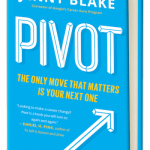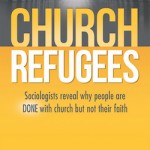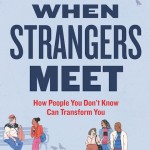Jonah Berger, the James G. Campbell Assistant Professor of Marketing at the Wharton School at the University of Pennsylvania ,has been named the school’s “Iron Prof” in recognition of his stellar faculty research. But while Berger’s fascinating original research and little-known study results pepper Contagious: Why Things Catch On, his new bestseller, it’s his laser focus on the science behind the influence that word of mouth has on everything — from the cars we buy to the clothes we wear to the names we give our children — that makes the book so widely appealing.
We caught up with Berger shortly after Contagious was published to ask him how meeting organizers can market their events so that people will want to attend — and encourage their peers to join them. He spoke with Convene from a southbound Amtrak train while he was traveling to Washington, D.C., for several television interviews. Requests for him to speak at meetings and conferences have been coming “fast and furious,” he said. It would seem that Contagious has caught on.
What makes word of mouth so influential, and how can meeting planners harness its potential to spread interest in their events?
People trust word of mouth much more than they trust ads. So if you see an ad that says, “This conference is great, you should go check it out,” you are well aware that of course the ad will say the conference is great. The ads are always glowingly positive; the comments they put up from attendees are always going to be positive. Word of mouth is much more nuanced. We know that our friends and colleagues will tell it to us straight. They’ll say if it was good, it was good; if it was bad, it was bad. And they will also tell us, well, maybe it’s good for certain people and bad for others. So word of mouth really provides a nuance and objectivity that is much more trusted.
The second benefit of word of mouth is that it’s much more targeted than traditional advertising. Let’s say there are some medical professionals [who might be interested in] a particular conference. You may put an ad in a magazine, but some of the people that read that magazine might not be interested in the conference. Word of mouth … is like a searchlight that goes through a social network, finding the people most interested in your content, and … they’re going to tell someone else they think will be most interested, not someone else who won’t be interested. And so the value of the customers that are found through referral and other types of word of mouth now are much higher.
How believable are video testimonials from a previous attendee that encourage people to attend a conference?
I think that is more believable than a static ad with a testimonial on it. That said, people know that the conference organizers cherry-picked that contact. They’ve shot the video a few times to make sure it’s good. And so people recognize that it’s selected to be good, it’s selected to persuade them. Whereas, we don’t feel like our friends are trying to persuade us, we feel like our friends are trying to help us. So we are much more likely to listen to what they have to say.
Given social media’s prevalence, is there a way to foster that kind of recommendation online?
Certainly. I mean, many companies and organizations use things like Facebook or Twitter to allow people to submit more objective sorts of comments about their events. One important thing to remember is that most word of mouth is actually offline. It’s not on Facebook, it’s not on Twitter, it’s not on blogs. It’s face-to-face conversation, and 80 percent of word of mouth is face-to-face. Another 10 percent or so [takes place] over the phone, but most word of mouth is in an offline context. It’s employees talking at work, it’s friends getting together after work. And so it’s important to think about social media and how to harness that, but [recognize that] only 7 percent of word of mouth is on social media. So it’s equally important to think about offline as well.
What is much more important is to turn existing customers or existing conference-goers into advocates. How can you make sure that if someone goes to a conference that you put on, they are more likely to tell five people [about it] than just two? They are most likely to post about it rather than just talk about it offline. Potentially how can you create the batting average or the diffusion of your message?
In your book, you talk about the importance of triggers -stimuli that prompt people to think about related things. In terms of registering for a conference, what’s the difference between a trigger and a registration-reminder email or marketing piece?
The best idea of a trigger is something that is in the environment that is not the thing itself that reminds you to think about the conference. So you can imagine sometimes people often send swag or giveaways that sit on people’s desks that might trigger them to think about the conference. Another thing I think that is really key here is to make the private public. I talk a lot about it in the book — about if you don’t know what others are doing, it’s hard to imitate it.
In this case, if you don’t know if your peers are going, it’s going to make you much less likely to go as well. And so one key factor is, if people know someone is going, how can you make that more publicly visible? How can you make it easier for people to see that their friends, their colleagues have decided to attend, which will make them think it’s more worthwhile to attend as well? And it’s particularly important, right, because people also enjoy going to conferences with their friends, with people they know. So it’s not just suggesting the conference is better because I know people that are going, but I am actually going to enjoy it more because more of my friends are there.
That points to the importance of making public the list of people who have already registered.
That is one thing, right, but that requires individuals going to look for it. The different question is, how can you give an attendee something that they’ll carry somewhere, post on their Facebook page so that other people can see it? I call that in the book “behavior residue,” which is something that sticks around after the action has taken place. So I may have registered for this conference; now, how can I, as a conference organizer, encourage someone to put something on their desk, give them something to wear, give them something to post on their Facebook page so that other people can see that lots of their friends are doing it?
For example, recently [with] the court case regarding gay marriage … a whole bunch of people put [the red equality symbol] on their Facebook pages. Did you notice that? What that does is rather than there being a website somewhere — where you have to go look for it and figure out if your friends support this cause — there is already a public signal. So you know right away that they support it.
You also talk about harnessing the power of emotion in your book. How can meeting organizers put the power of awe to work at a conference?
One thing I talk about in the book with [regard to] emotion is to focus on the feeling. A lot of times we think about the function — what are the benefits of going in this particular conference, what are the features, how many speakers will we have, how many breakout sessions, all those sorts of things. But the more we can get people fired up or active, the more likely they will be to share. So, how can you get them excited about this particular conference? How can you inspire them with all the information that they’re going to learn? And sometimes it is — rather than giving them tons of information — giving them one really awe-inspiring piece of information that stops them, makes them think, that wows them enough to decide to go. The more excited you can get them, whether that’s because of seeing their friends or seeing the content there, the more they’re going to share with others.
Tell us about some conferences that you have either attended or spoken at that you think have successfully created a buzz.
I’m actually doing something like the following: Imagine having some events that are limited in their attendees, not everyone can get access to it, but all you have to do to get access is be one of the first signups on the website and confirm that you’re going and it will post to your Facebook page. Now, that’s online word of mouth, but you can imagine people want to be the first to get it, it has some social currency, it’s exclusive, but also, when they sign up to do it, all their friends get to see that they’re going.
I go to psychology conferences every year, and at their events — educational events, talks, as well as parties — you see people registering to get information about them. And along the way, you get to see how many of your friends are going, which makes you much more likely to want to go, which makes you say, “Wow, if these other three people are going, I have to go, I haven’t seen them in a long time.”
Conferences are great ways to learn but also engage in that sort of offline social-capital building, creating network ties, meeting old friends, sharing information through those ways. Conferences are inherently social — people don’t just go there to spend time by themselves, but to spend time with others. The more the conference can harness that aspect, online or offline, the better off they’ll be.
How do you see the future of face-to-face going – more or fewer conferences?
I think there will be more online interaction. Just like there will be more online word of mouth. But the truth is, it’s still a very small percentage. Part of the reason people go to conferences is not just to suck up that information — if it was just that, I could download the PowerPoint files, and why even go? I could just watch videos. Part of the value there is the unexpected interaction — the running into a colleague that I didn’t know would be there. Having dinner and meeting someone through someone I already know, and getting access to new information or a new potential client that I wouldn’t have met otherwise without that happenstance interaction. And so part of it is that offline, face-to-face, social-capital building through network ties. It’s very hard to replicate that online.
Are there any other thoughts you have relevant to the meetings industry?
I think social currency again is really key for conferences. I just went to South by Southwest, [where there were] exclusive events that you had to be invited to or registered to [attend]. They were normal events, but many of them were exclusive. And it just made it more exciting; it makes you want to tell other people, because you feel special to have been able to go.
LinkedIn recently did something you probably saw where they sent out a note to a number of their subscribers say ing, “Hey, your profile is one of the top 10 or top 5 percent of profiles.” People felt really good about that, and they shared it with others, because it made them look good. But along the way, they were sharing about LinkedIn, they were spreading the word about LinkedIn. I think leveraging this social cur rency, enabling people to look good, will encourage them to talk about [your meeting] as well.





